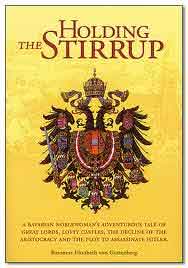|
Great
Gift Idea!
$20.00 (P&H included)
(To Order By Telephone: (651) 204-0145)
 Lepanto Press,
the publishing arm of Our Lady of Victory School in Post
Falls, Idaho, has been reprinting ‘temporarily lost’
older Catholic books in beautiful new hardback editions
for almost twenty years. The last few years they’ve
expanded their reprint selection from mostly textbooks
and historical novels to a wide variety of children’s
and adults’ books, including biographies and spiritual
books written for families. Their hardbacks have
gold-embossed covers and many have beautiful dust
jackets. Lepanto Press,
the publishing arm of Our Lady of Victory School in Post
Falls, Idaho, has been reprinting ‘temporarily lost’
older Catholic books in beautiful new hardback editions
for almost twenty years. The last few years they’ve
expanded their reprint selection from mostly textbooks
and historical novels to a wide variety of children’s
and adults’ books, including biographies and spiritual
books written for families. Their hardbacks have
gold-embossed covers and many have beautiful dust
jackets.
Some of the
titles include Flame of White a biography of St.
Pius X for teenagers and adults; Great Wives and
Mothers, an excellent companion to a teenage girl’s
curriculum; The Mother by Cardinal Mindzsenty, a
practical and spiritual reference book for mother and
family formation; Charlotte Longe’s The Lances
of Lynwood, and Grisly Grisell – one of the
most popular and talked about books around here for
teenage girls; The Boy Knight of Reims, with
unique illustrations, about 14th Century
Reims seen through a boy’s eyes, and many other notable
selections.
This month
Lepanto Press is releasing a brand new gripping
biography by James Fitzhenry entitled St. Fernando
III. It’s all about the Spanish monarch, King of
Castile and Leon, who lived during the 1100’s -1200’s
and could count among his relations St. Louis IX of
France, El Cid, Charlemagne, and later, Isabel the
Catholic.
“In an
older day it was customary for a woman to hold her
husband's stirrup when he mounted to go into battle.
That gesture became a symbol of her fidelity and courage
while he was gone.”
Although
tempting as a St. Fernando III book review is,
this review is about a new Lepanto Press reprint,
Holding The Stirrup, a circa 1952 autobiographical
account of Elisabeth von Guttenberg, Baroness of
Bavaria. Covering the post WWI to post WWII period in
Germany it gives us an unusual glimpse of these eventful
years through the life of a cultured and spiritually
wise Catholic noble. The intermingled stories of the
Baroness’ relations and acquaintances make this memoir
immensely interesting: Theresa Neumann Konnersreuth,
recipient of the stigmata; her cousin, Claus
Stauffenberg, the Catholic officer who implemented the
famous failed plot to assassinate Hitler; Kaiser Wilhelm
and Emperor Karl of Hungary as well as other heads of
state and political and religious leaders.
You soon
realize that you are not just reading a run-of-the-mill
autobiography; instead, you are becoming actively
involved in a fellow Catholic’s life. Sharing details of
her early life, education and travels, her marriage to
Baron Enoch von Guttenberg, their special connection
even after his death, and later her efforts to save as
many of her relatives and friends as possible during the
Nazi reign of terror in Germany leaves the reader unable
to put this graceful narrative down.
“Here was
tradition, honor and responsibility – yes, a grave
responsibility!”
Along with
descriptions of her proper and beautiful courtship and
subsequent marriage to Baron Enoch von Guttenberg and
her happy early married years learning her stately
duties and responsibilities, she also proudly details
the births, childhoods and later lives of their
children. Included are many photos of family and
friends.
The reader
soaks in vivid descriptions of renowned art collections
and ancient castle homes that she lived in or visited as
she carried out her duties of state. Later in her story
under very difficult circumstances more of these
vignettes offer a much needed break from the
descriptions of the growing menace. We learn how she
relied on her faith and kept tradition alive in the
middle of a diabolic mess. ‘Noblesse oblige’
takes on a deeper meaning after reading what it
entails for her to fulfill her stately and personal
duties in such impossible circumstances as those during
the Third Reich.
Her life was
blessed with a few supernatural occurrences and one or
two timely miracles. Her strength was supported by a
deep spirituality taking form in action – this is
not a fluffy memoir, in fact, it’s difficult to
understand how she kept up physically with the demands
of ‘holding the stirrup’ in addition to trying to simply
stay alive.
“It was
soon impossible for anyone in Germany to evaluate events
within Germany or news from the outside world….It was
amazing to watch the speed with which the paralyzing
power of dictatorship and tyranny grew. Demoniac forces
seemed to remove all obstacles in Hitler’s way.”
Claus von Stauffenberg, the
Catholic who tried to stop Hitler
The Baroness
describes the complete stranglehold on education and
media, the endless propaganda which effectively
supplanted a new culture and a new literature in
Germany, causing many to doubt the horrible things they
later heard about Germany. Some of the questions she
attempts to answer in this book are: Why were the
Germans so taken in by Nazi propaganda – and so easily
controlled? What lead up to this period? What was it
really like living inside Germany during this
time? What about the nobility? What was the resistance
movement (lead mainly by Christian nobility) doing?
Who was Claus Stauffenberg, and what became of his
family?
The
interdependence and healthy working relationship between
the Barons and their tenants is shown from their own
point of view. Retold conversations with her husband,
and conversations between him and the nobilities of the
resistance movement offer rare insight to their thinking
and their efforts to deal with the madness in their
midst. Baron Enoch von Guttenberg’s words of prophecy
eventually came true with the Reich assuming the horrors
of the French Reign of Terror when even a ‘wrong’ word
would get you immediately executed.
“Here it comes, sooner than I
expected…the dragon begins to devour itself!”
Holding The
Stirrup
also shows us that there were seeds of goodness
scattered among the Gestapo, SS Guard, and other
agencies of evil. We learn about these courageous men
and women through the Baroness recounting her desperate
(and sometimes successful) attempts to save as many of
her family and friends as she could.
There are
discussions recounted along with her own thoughts about
the ways which a democratic monarchy could have saved
Germany, but as the Baroness states sadly, “…one feels
that the Nazi purge deprived Germany of almost an entire
generation of men who should now have been her leaders.”
“Hitler’s revenge was swift and terrible. The country
was drenched in the blood of its most brilliant and
courageous men, the men who should have lived to rebuild
a new Germany.”
Holding
the Stirrup
gives a unique account which holds the reader firmly
rapt through her depictions of harrowing escapes,
terrifying captures, families split apart and
‘disappearing’ – but also through the tales of heroism
and self sacrifice, love and tradition, miracles and
‘Divine synchronicities’, and ultimately through the
triumph of the Catholic faith in action amidst a way of
life being destroyed.
The fact that
this is a Catholic memoir depicting Catholic responses
to a great overpowering evil and many personal morally
challenging events keeps it from being yet another
gut-wrenching, depressing and despairing list of horrors
from WWII. The Catholic nobility, raised from birth to
do their duty above all things, shows us a
wonderful example for raising our children. Regardless
of the outcome of such catastrophic events, for
Catholics there is always hope, God is always
with us, just as there are always ultimate sacrifices
which we pray will not be wasted.
Our collective
American memory has been tainted by a deformed image
force fed to us regarding Catholic nobility. This book
will help to reorder our thinking towards a balanced and
realistic understanding of monarchies and their
nobilities and away from the anti-Catholic, anti-Papal
worldview propagated by Protestant and Freemasonic
‘Modern’ education.
Certainly for
adult reading, but this very readable autobiography
could be used as an addition to a high school modern
history or American History/ WWII course. It’s
invaluable to studying the post WWII systematic
destruction of the world’s Catholic monarchies in the
name of Freemasonic democracy. Book clubs will also
benefit from Holding The Stirrup as there is a
lot to talk about! |
